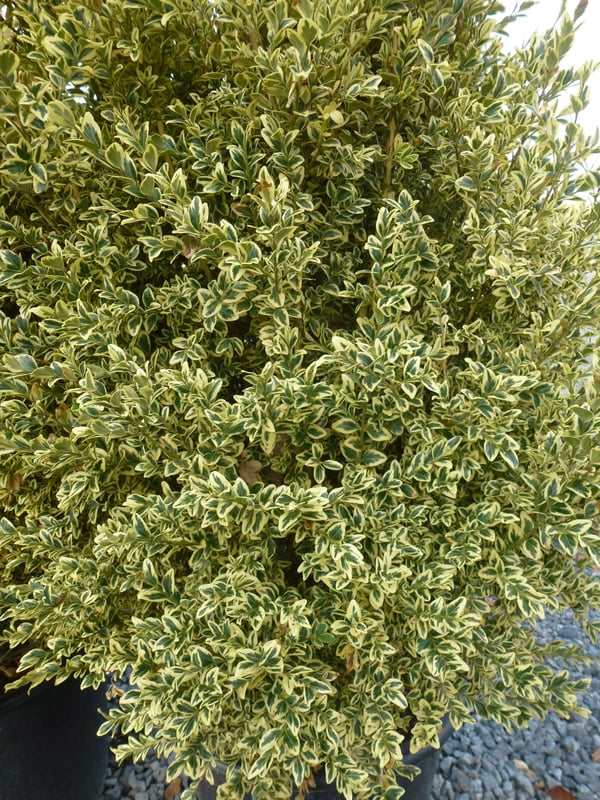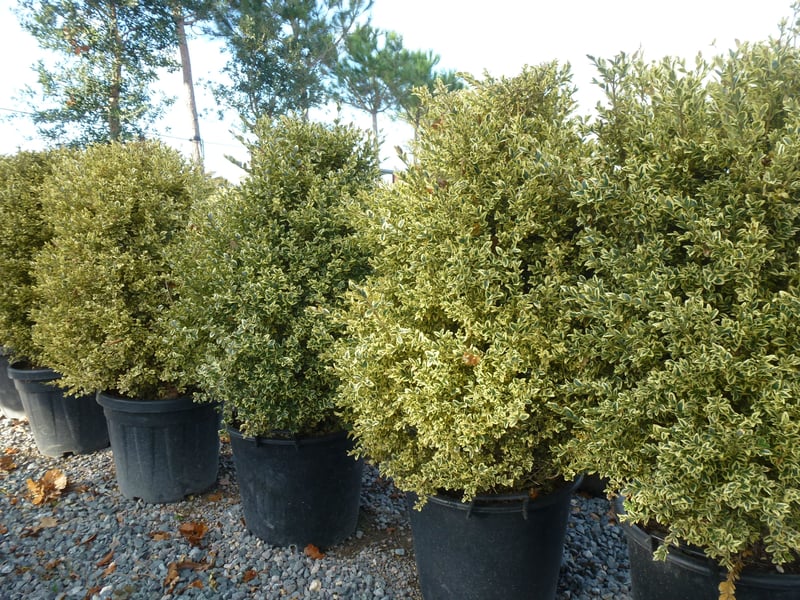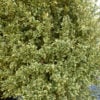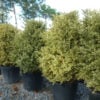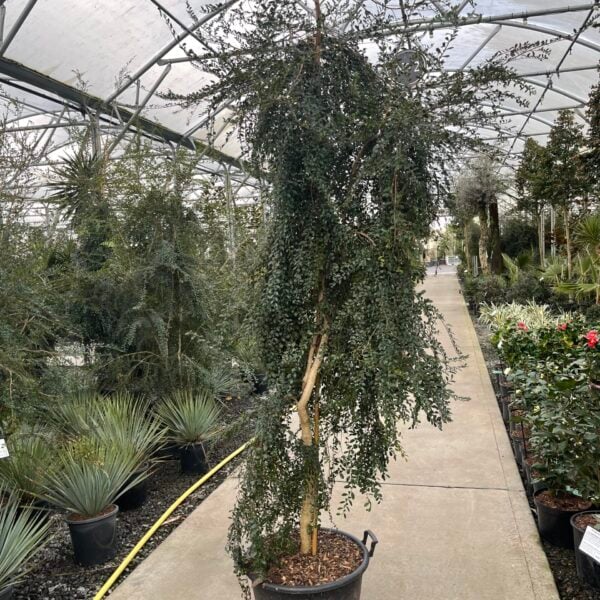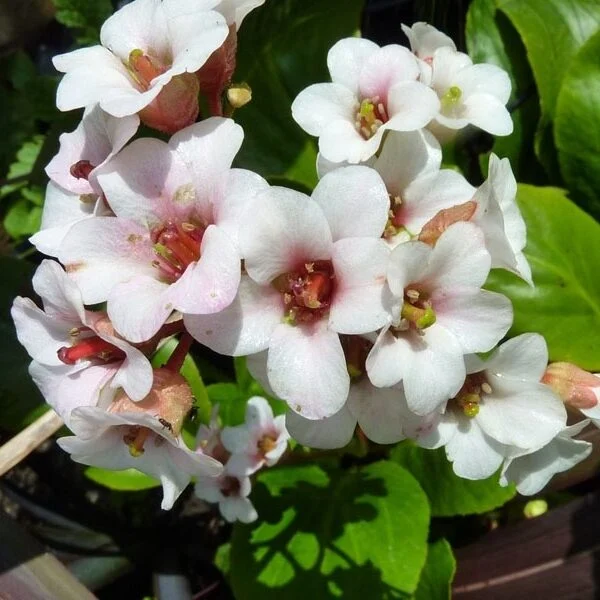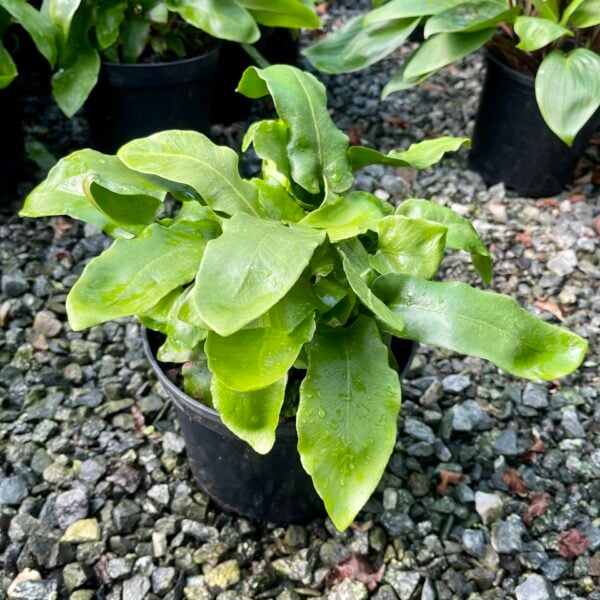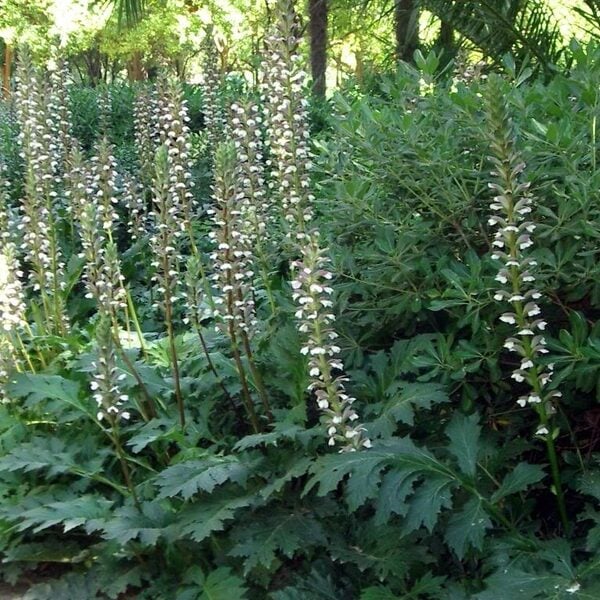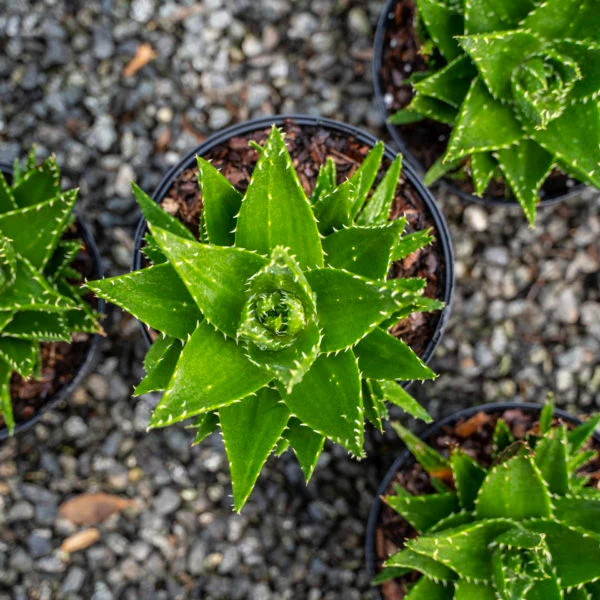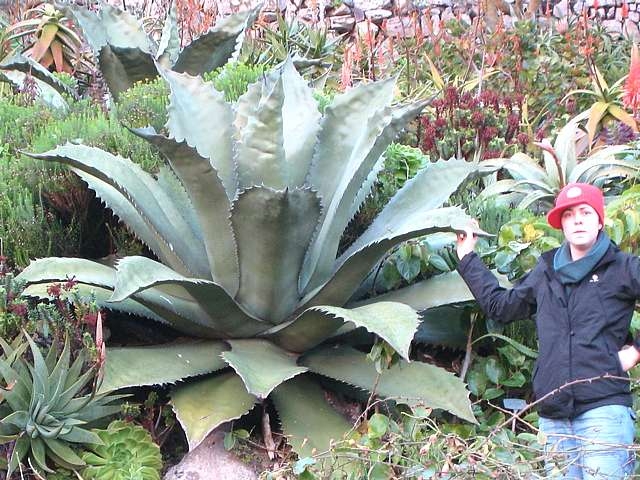Buxus sempervirens variegata (Variegated Box)
Variegated Box. As tough and vigorous as the green one. Rare. Probably a victim of a certain snootiness about variegation that we sometimes share. Not in this case. Please contact us for stock availability and sizes.

Hardiness level Green
Variegated Box is not often seen and no doubt traditionalists will hold up their hands in horror at the very idea of something of such doubtful taste as Variegated Box. Its delicious and clips beautifully and compliments clipped green box as well as anything. We have lots on the nursery and - incidentally - have never seen any Box Blight on it. Possibly because we clip them very rarely.
The words below are cut and pasted from our entry on Buxus sempervirens (the non variegated one) :
Box left to its own devices is often a shapely little multistemmed tree with bark almost as deeply fissured as a cork tree. You can see them looking pretty wild at the foot of Box Hill in Surrey and occasionally in church yards but more commonly they're used as topiary - for hedges, balls, cones, pyramids etc.
Largely because it's native, it's been used as an evergreen ornamental topiary plant for many centuries and is a well established tradition throughout Europe. That is until Box Blight (Cylindriclodium) began to sweep through the continent some years ago. By about 2014, it had become an epidemic and we started cutting down on the amount of box we sold. Whether one is confronted with an epidemic of The Black Death, Ebola or Box Blight, a degree of panic and hysteria is permissible and understandable. However, there are a few reassuring things to be said :
1. It seems that the airborne fungus that causes the die-back (Blight), gets in to the plant through the cut ends of the leaves. I've yet to see Blight on uncut Box Trees. Clip your box less often than you used to and you'll reduce the chances of infection.
2. Just like The Black Death and Ebola, epidemics seem to have a natural life cycle; they peak and then decline, often because the host builds up a natural resistance. As I write (2017), I would say it's already in decline. We have noticed less on the nursery and have heard less reports of new outbreaks. This is only anecdotal but that's all we ever have to go on.
3. Good hygiene, surgery and medicine, work. When clipping, always have a bucket of 5% bleach solution (household bleach or Milton solution will do) and dip the tool you're using in the bucket, regularly and count to 5. The bleach will kill any spores on the tool and stop you spreading the disease. Clear up all clippings from the ground and burn them and any badly effect areas, cut out entirely. If this leaves an ugly hole (it will), it's not half as ugly as having an expanding patch of dead plant and as nature abhors a vacuum, the plant will fill the hole with new growth before too long. Treating affected plants with fungicide will help. Unfortunately all the most effective fungicides have been banned because they're dangerous. Of course, they're dangerous, that's why they work. Any fungicide will help. Bordeaux Mixture (mostly a Copper sulphate solution) used to be the standard and only fungicide and it was pretty effective too. It became unpopular because it made the plants go blue (Copper sulphate's blue) and new colourless and effective fungicides were coming on the market. Most have them have been banned now so it looks like it's time to bring back good old Bordeaux.
It's little leaves, hardiness and tolerance of either sun or shade have made it a favourite throughout Europe and its beautiful velvety texture when well clipped add to its desirability but a hunt for a reasonable substitute has been on for some time. Ilex crenata (Japanese Holly) was an obvious choice because it looks so similar but in our experience, it's not keen on the British climate - not sure why, maybe the summer's aren't warm enough. There are a number of small leafed reliable evergreens that can substitute (Phillyrea latifolia, Baccharis patagonica for example) but few are as shade tolerant and therefore as adaptable as Box. After much searching about we have two suggestions : for fast growing - Lonicera nitida 'Elegans' and for something slower, Euonymus japonica microphyllus. The Euonymus has the advantage of being shade tolerant and like so many Euonymus, good by the sea and a nice harbinger of spring as the leaves emerge early in the year looking fresh and green.
Having said all that, there's no real substitute for dear old Box and we have high hopes that the Blight will decline and we'll soon be back to normal.
Box is always propagated by cuttings.
N.B. When clipping several plants with the same tool, have a bucket containing a 5% bleach solution and swish your blades around for 30 seconds between plants to sterilise them. This will help avoid the chance of cross contamination of disease.
As with all woody plants, plant high, exposing as much of the taper at the base of the trunk as possible. Allowing soil to accumulate round the base of a tree can be fatal. Keep very well watered when first planted.
Additional Information |
|
|---|---|
| Soil Type | |
| Light | |
| Plant Type | |
| Continent of Origin | |
| Specialist Plants | |
| Situation | Coastal, Exposed (To wind and sun), Mild City Gardens, Plants for Pots, Sheltered Garden |
| Hardiness | |





